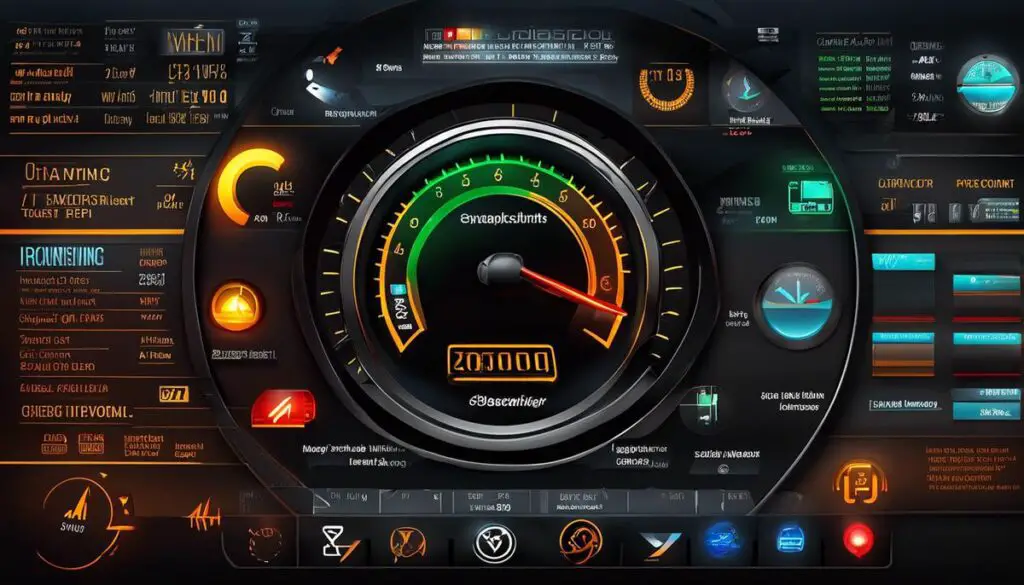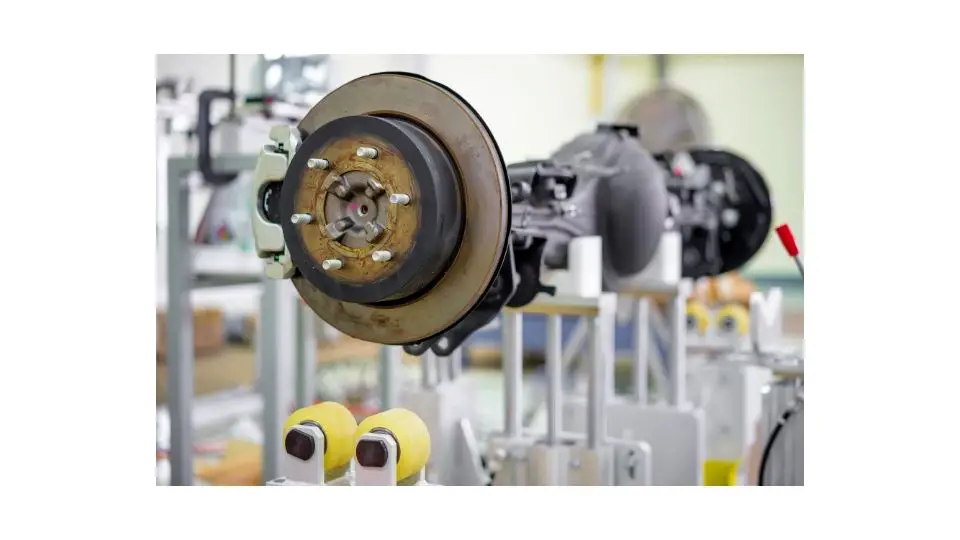Known by many but understood by few, vehicle dashboard symbols are an essential aspect of automobile operation and safety. Not just meaningless icons, these symbols convey important messages about the status of your vehicle. Ignorance of these messages can lead to anything from costly repairs to catastrophic accidents. In this discussion, I delve into the world of these cryptic pictograms, their meanings and, most importantly, the significance of the red dot or red circle light symbol that appears in many vehicle models around the world. I will also shed light on regular maintenance practices and how they can mitigate the occurrence of warning lights.
Vehicle Dashboard Symbols
Decoding Your Vehicle’s Dashboard: The Ultimate Guide
Ever been baffled by your vehicle’s dashboard lights that seem to speak a foreign language? You’re not alone. The world of vehicle maintenance and care is an exhilarating, knowledge-rich journey that goes beyond the thrill of hitting the pedal. Today’s article focuses on demystifying those pesky symbols that crop up on your vehicle’s dashboard and understanding what they mean. Brace yourself for a riveting expose on this lesser-known but essential front of the automotive experience.
1. Check Engine or Malfunction Indicator Light (MIL):
This is one of the most common and admittedly ambiguous symbols that pop up on car dashboards across the globe. It usually resembles a little engine. If illuminated, it means something’s not right under the hood – this could range from anything as trivial as a loose gas cap to significant engine issues. Get the vehicle checked by a professional as soon as possible.
2. Battery Alert:
This icon resembles a battery and means the car’s charging system is short of power. If this lights up, the issue could be with the car battery itself, the alternator, or even the wiring. A quick visit to the mechanic is in order.
3. Oil Pressure Warning:
Does the symbol look like a dripping oil can? Then it’s the oil pressure warning. If this lights up, the oil levels might be running low, or there might be an issue with the oil pump. Time to check the oil levels or pay the mechanic a visit.
4. Brake System:
A circle partially encased in parentheses, and often accompanied by an exclamation mark, signifies an issue with the brake system. If illuminated, either the brake fluid is low, or there is an issue with the brake hydraulics. Definitely a situation where swift professional attention is needed.
5. ABS Warning Light:
ABS stands for Antilock Braking System. This symbol, usually the letters ABS inside a circle, indicates that your vehicle’s ABS system might be malfunctioning. The brakes will still work, but the antilock feature that prevents wheels from skidding may not. Another reason to take a trip to the mechanic.
6. Tire Pressure Warning:
A symbol that looks like a deflated tire with an exclamation mark is the universal sign of low tire pressure. If this pops up, the vehicle has detected low pressure in one or more tires, and they should be pumped up.
7. Engine Temperature Warning:
A symbol resembling a thermometer immersed in liquid signifies an overheated engine, which could be due to several reasons like low coolant levels or a radiator issue. Keep cool and head off to the mechanic.
8. Airbag Indicator:
This symbol, looking like a person with an airbag deploying, warns that a vehicle’s airbags are not functioning correctly. Professionals should definitely be involved to resolve this safety issue.
These are just a few of the essential dash lights. Remember, getting to know the vehicle’s visual language not just amps up the driving experience, but also acts as a first line of defense in maintaining and caring for the cherished ride. Go forth and enjoy the thrill of knowledge-infused driving!

Photo by cashoyboy on Unsplash
Red Dot, Red Circle Light Symbol
The Mysteries of the Dashboard: Deciphering the Red Dot and Red Circle
Did you know that our car dashboard is like a secret language, unintelligible to many but full of important messages? Among these messages, one of the most cryptic yet vital to understand is represented by the red dot or red circle symbol. This simple appearing icon communicates crucial information about the overall performance and condition of your vehicle. So, what exactly does the red dot or red circle on a dashboard mean? Let’s get to the bottom of it.
The red dot or red circle light symbol appears when the vehicle’s security system is activated. Yes, that’s right! It’s your automobile acting as a round-the-clock security guard, ensuring that everything is locked up tight when it’s supposed to be. This symbol often signifies that the immobilizer system is operational, preventing the vehicle from being started without the correct key or fob. Never underestimate the might of this small symbol; it’s a major deceiving factor for car thieves, posing a hard-to-crack barrier.
But wait, there’s more! Red dots or circles can also be the warning signal for the primary fuel control systems in some vehicle models. In such cases, it acts as a sentinel looking out for the fuel combustion efficiency. It helps in optimizing fuel consumption and reducing harmful exhaust gases. This red dot light enables your compact mechanical beast to breathe clean, aiding in the quest for a greener earth.
The red circle can also signal an immediate brake system issue in some vehicle designs. If you see a red circle symbol glowing persistently on your dashboard, it’s an absolute necessity to ensure that your parking brake is not engaged. It’s a signal to get your brake fluid levels checked or, in some cases, a simple yet crucial reminder that your parking brake is still on. Properly maintained brakes ensure a smoother ride and prevent unforeseen accidents.
One more reason you might see a red dot or circle is when there is a door ajar or the trunk is not closed properly. Your vehicle is conspiring for your safety, insisting that you double-check, providing an extra layer of caution. It is always advisable to take the time to ensure that all doors are secure and protected for a safe journey.
Understanding your car, its signals, and interpreting the patterns is not merely an enthusiast’s hobby, but a necessary skill for every driver. Knowledge can be the difference between roadside assistance or reaching your destination on time. Consider each glowing symbol on your dashboard as an essential tool, guiding you in safely navigating through your vehicular journey. Remember, it’s our vigilant partner whispering, “Hey! Something needs your attention.” These glowing symbols on our car’s dashboard are instrumental in fully enjoying the delightful journey of roaring engines, smooth roads, and freedom. Dive deep into understanding your vehicle’s language, the art of automobile communication, and let’s drive towards a safer, smarter motoring experience!

Photo by wesleyphotography on Unsplash
Regular Vehicle Maintenance
A well-maintained vehicle is akin to a well-tuned orchestra; each part plays its role diligently, resulting in a harmonious performance. As such, regular vehicle maintenance greatly reduces the occurrence of warning lights illuminating on your dashboard. Here’s an insight into how this works out.
Doing routine transmission services, for instance, cuts down the chances of seeing a Transmission Temperature warning light. This alert usually warns of an overheated transmission system, often a consequence of poor fluid condition. Regular transmission flushes and replacing old fluid with new, quality transmission fluid ensures the system remains cool, thus curtailing the onset of this particular alert.
Next up, the Coolant Warning Light largely depends on the vehicle’s coolant system. Neglecting to refill the coolant reservoir or ignoring coolant leaks could potentially trigger this warning. Thus, consistently doing simple coolant services, such as flushing the system, observing its level from time to time, and addressing leaks promptly, can prevent this light from becoming another dash-right resident.
Fuel system maintenance is pertinent in avoiding the Service Engine Soon light, which may indicate anomalies in fuel delivery. Regularly replacing the fuel filter, ensuring optimal fuel injector performance, and using high-quality, vehicle-specific fuel can shore up your defenses against this warning.
Moving forward, the Power Steering Warning light is another beacon that can be suppressed via good maintenance. Regular checks and refilling of power steering fluid, coupled with a keen eye for any abnormalities in the steering operation, like noises or stiffness, can nip power steering issues in the bud, keeping this warning at bay.
Seeing the Traction Control or Electronic Stability Control light often isn’t a desired spectacle. Good tire upkeep, specifically maintaining the correct tire pressure and regular tire rotations, is a proactive way to reduce instances of this warning. Reliable tires provide a solid foundation for many vehicle operations, including the traction control and electronic stability systems.
Lastly, the Seatbelt Warning light is primarily human-controlled. However, regular inspections of the seat belts for tears, wear, or damage, alongside routinely checking the functioning of the seat belt fasteners, minimize any chance of malfunction, thereby keeping the light off.
In sum, having a solid vehicle maintenance routine contributes significantly to a less illuminated dashboard, fostering more confidence and enjoyment on the road. Remember, good maintenance isn’t an expense, but rather, it’s protecting an investment – your beloved vehicle!

Photo by thoughtandtheory on Unsplash
Hope this knowledge serves as a comprehensive guide in interpreting those perplexing symbols on your vehicle’s dashboard, particularly the critical red dot or red circle light. Understanding your vehicle’s language not only ensures your safety but also prolongs your vehicle’s lifespan through appropriate timely actions. Ultimately, your car isn’t just a machine; it’s a partner on the road, and just like any other partner, it communicates. The key is to understand what it’s trying to say. The close relationship between regular vehicle maintenance and illuminated dashboard lights is a testament that prevention is better than cure, and being proactive can significantly reduce unexpected car troubles. So the next time your vehicle flashes that red dot or red circle light or any other symbol, you will know exactly what it means and what to do.





